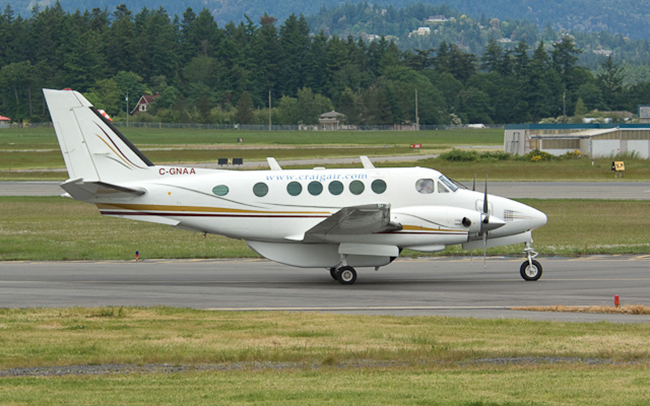Date & Time:
Jan 16, 2009 at 2110 LT
Type of aircraft:
Beechcraft 100 King Air
Registration:
C-GNAA
Flight Phase:
Landing (descent or approach)
Flight Type:
Positioning
Survivors:
Yes
Schedule:
Thompson - Island Lake
MSN:
B-24
YOM:
1969
Country:
Canada
Region:
North America
Crew on board:
2
Crew fatalities:
0
Pax on board:
0
Pax fatalities:
0
Other fatalities:
0
Total fatalities:
0
Captain / Total hours on type:
500
Copilot / Total hours on type:
620
Circumstances:
The crew was on a re-positioning flight from Thompson to Island Lake, Manitoba. On arrival in the Island Lake area, the crew commenced an instrument approach to Runway 12. On the final approach segment, the aircraft descended below the minimum descent altitude and the crew initiated a missed approach. During the missed approach, the aircraft struck trees. The crew was able to return for a landing on Runway 12 at Island Lake without further incident. The two crew members were not injured; the aircraft sustained damage to its right wing and landing gear doors. The accident occurred during hours of darkness at approximately 2110 Central Standard Time.
Probable cause:
Findings as to Causes and Contributing Factors:
1. The crew conducted an Area Navigation (RNAV) approach for which they were not trained, with an aircraft that was not properly equipped nor approved for such purpose.
2. The aircraft descended 300 feet below the minimum descent altitude (MDA) as a result of a number of lapses, errors and adaptations which, when combined, resulted in the mismanaged approach.
3. The aural warning on the aircraft’s altitude alerter had been silenced prior to the approach, which precluded it from alerting the crew when the aircraft descended below minimum descent altitude.
4. The SkyNorth standard operating procedures for conducting a non-precision approach were not followed, which resulted in the aircraft descending below the minimum descent altitude. During the ensuing missed approach, the aircraft struck trees.
Findings as to Risk:
1. The lack of a more-structured training environment and the type of supervisory flying provided increased the risk that deviations from standard operating procedures (SOPs) would not be identified.
2. There are several instrument approach procedures in Canada that contain step-down fixes that are not displayed on global positioning system (GPS) units. This may increase the risk of collision with obstacles during step-downs on approaches.
1. The crew conducted an Area Navigation (RNAV) approach for which they were not trained, with an aircraft that was not properly equipped nor approved for such purpose.
2. The aircraft descended 300 feet below the minimum descent altitude (MDA) as a result of a number of lapses, errors and adaptations which, when combined, resulted in the mismanaged approach.
3. The aural warning on the aircraft’s altitude alerter had been silenced prior to the approach, which precluded it from alerting the crew when the aircraft descended below minimum descent altitude.
4. The SkyNorth standard operating procedures for conducting a non-precision approach were not followed, which resulted in the aircraft descending below the minimum descent altitude. During the ensuing missed approach, the aircraft struck trees.
Findings as to Risk:
1. The lack of a more-structured training environment and the type of supervisory flying provided increased the risk that deviations from standard operating procedures (SOPs) would not be identified.
2. There are several instrument approach procedures in Canada that contain step-down fixes that are not displayed on global positioning system (GPS) units. This may increase the risk of collision with obstacles during step-downs on approaches.
Final Report:
C-GNAA.pdf361.51 KB


